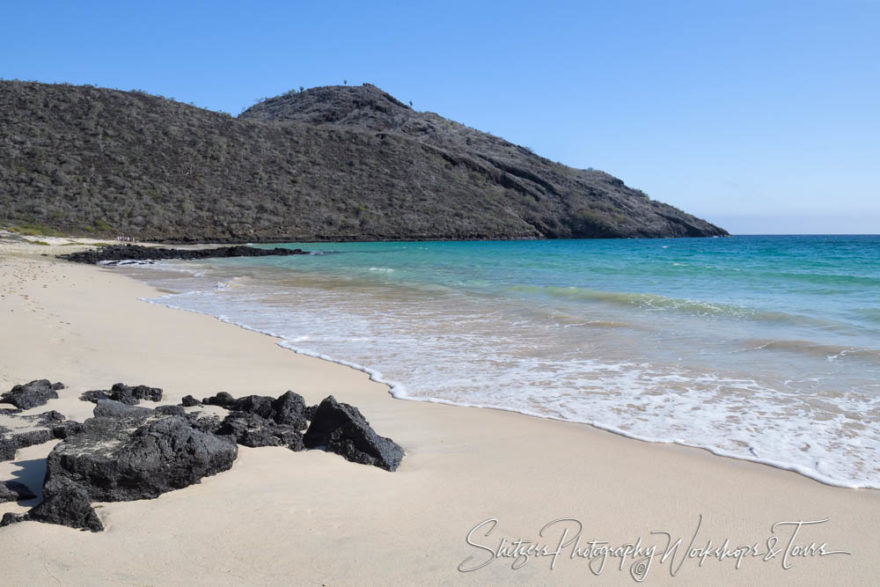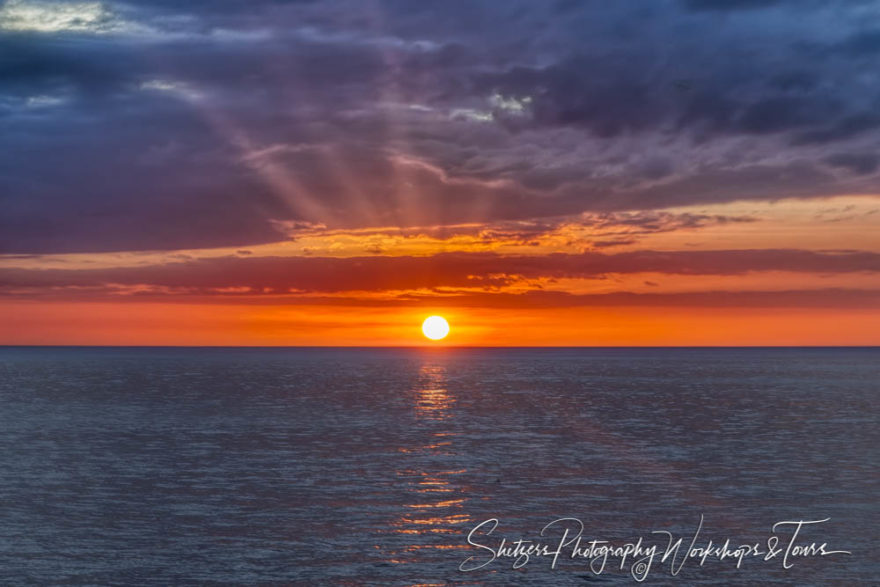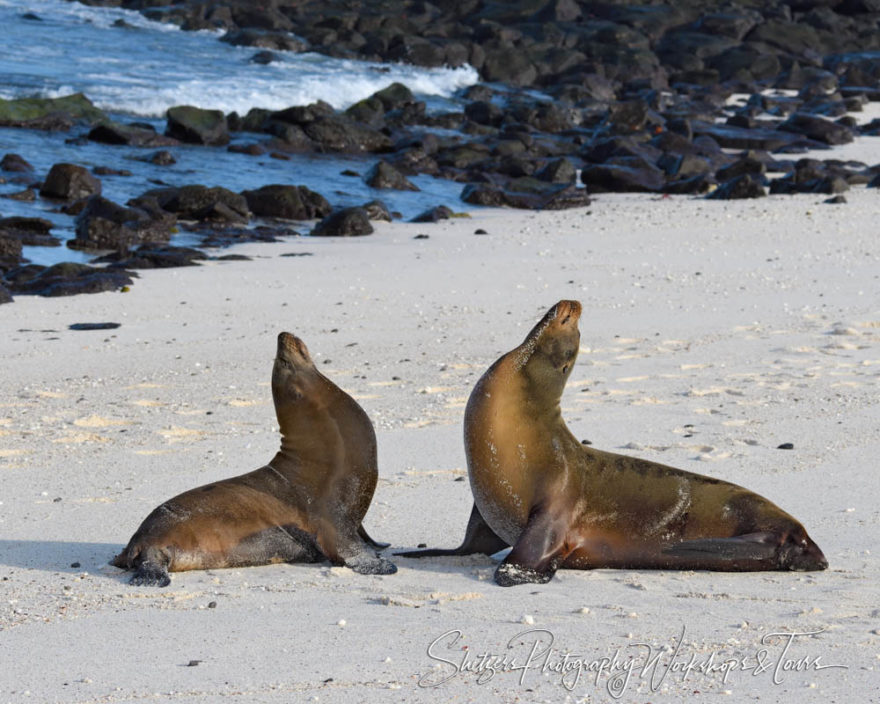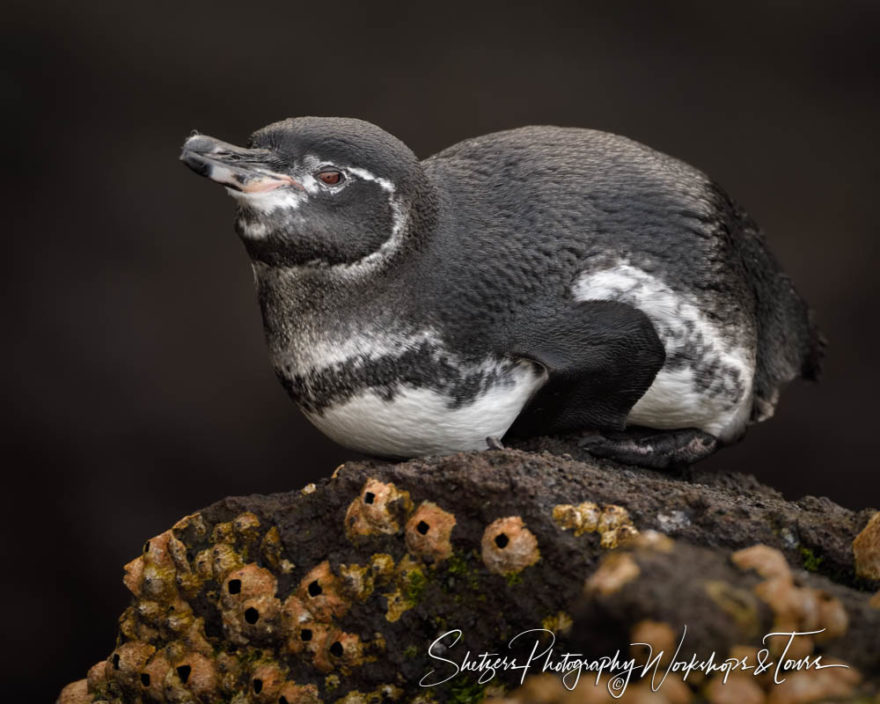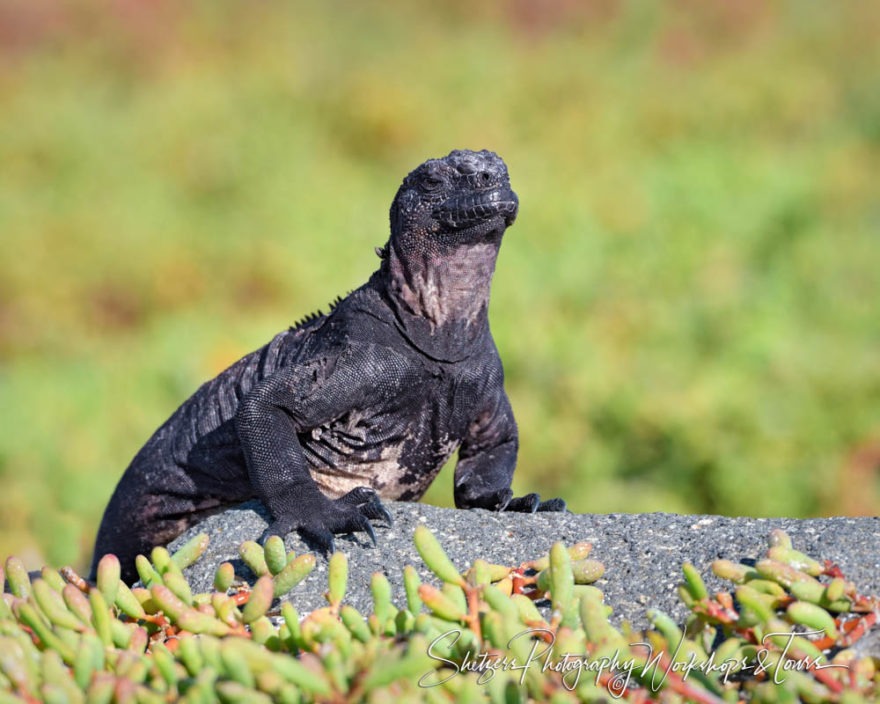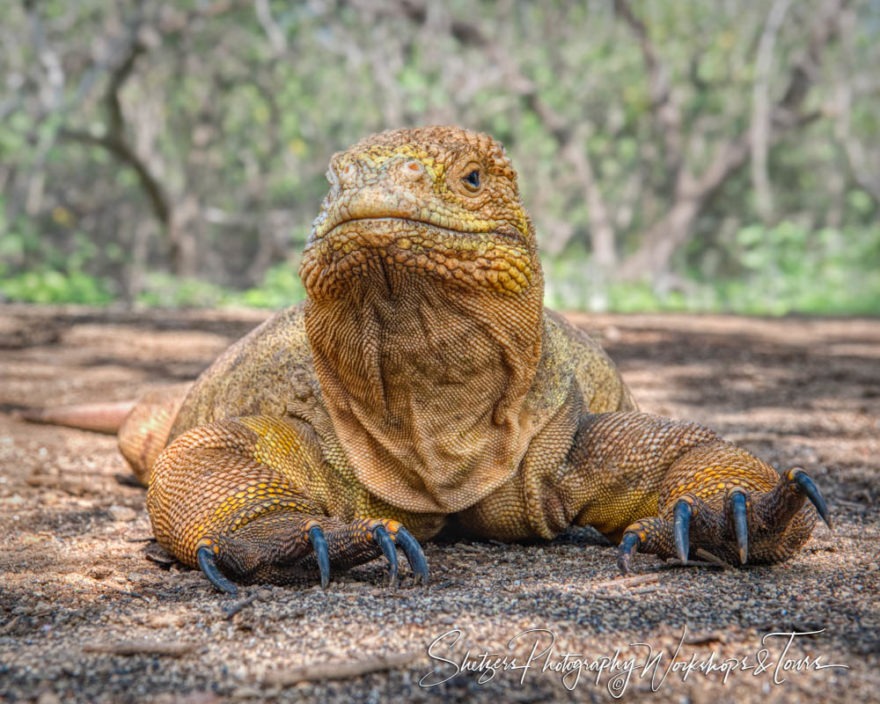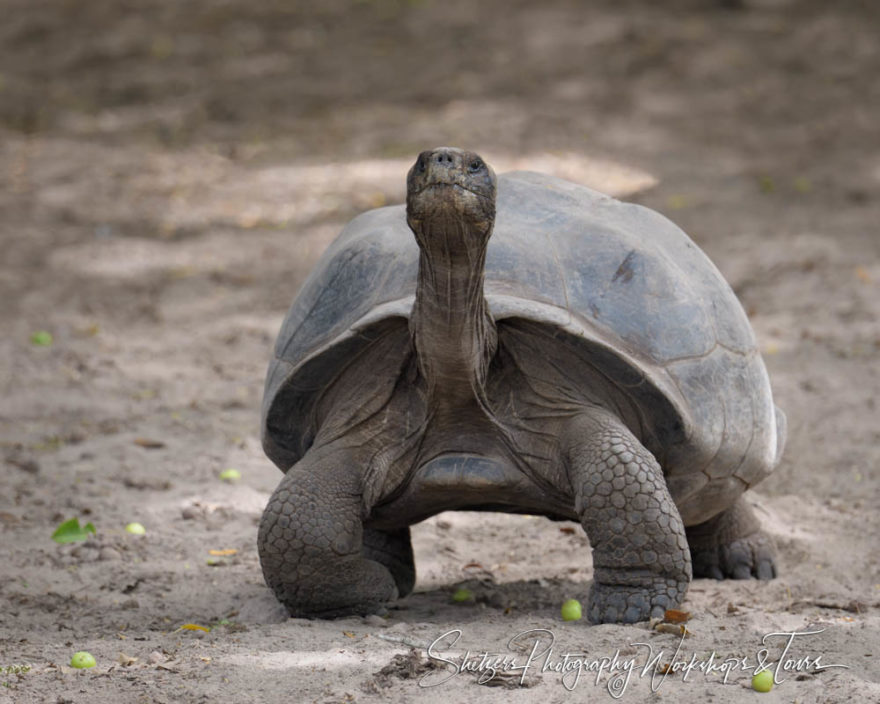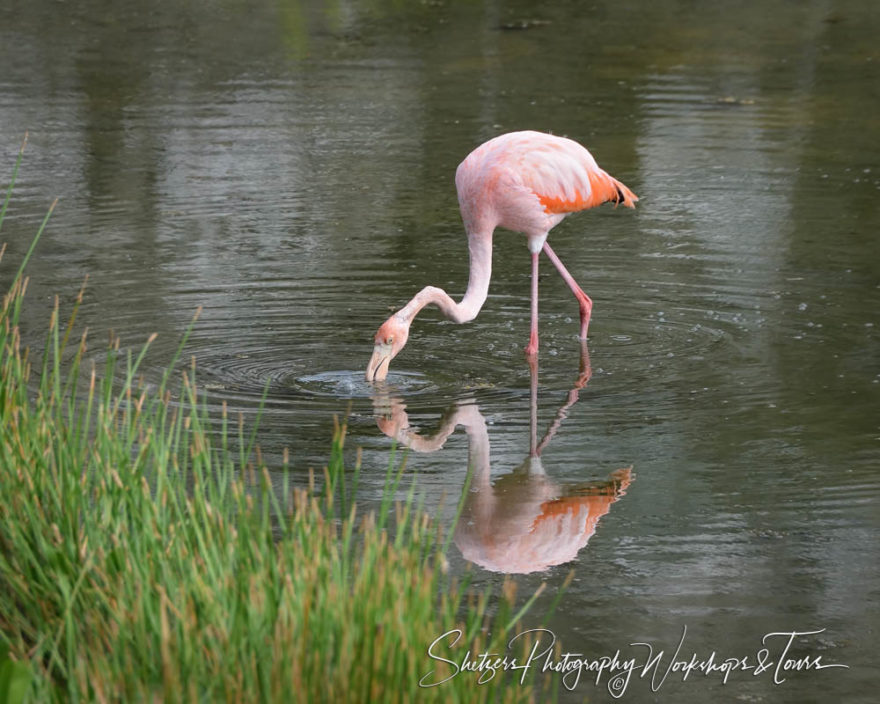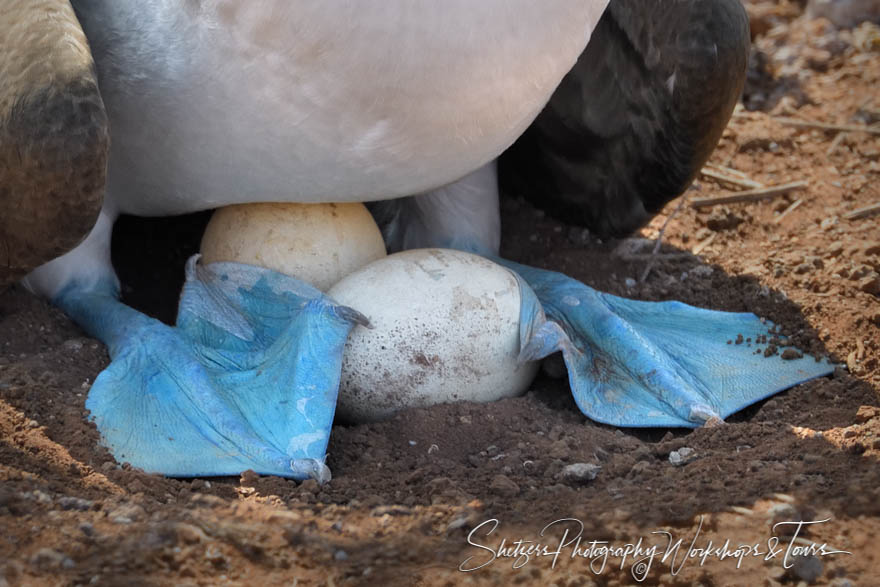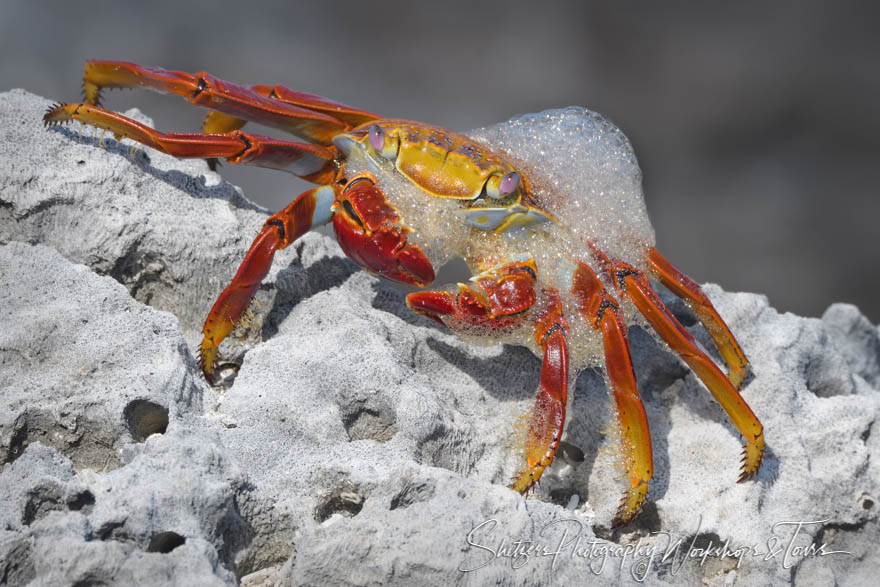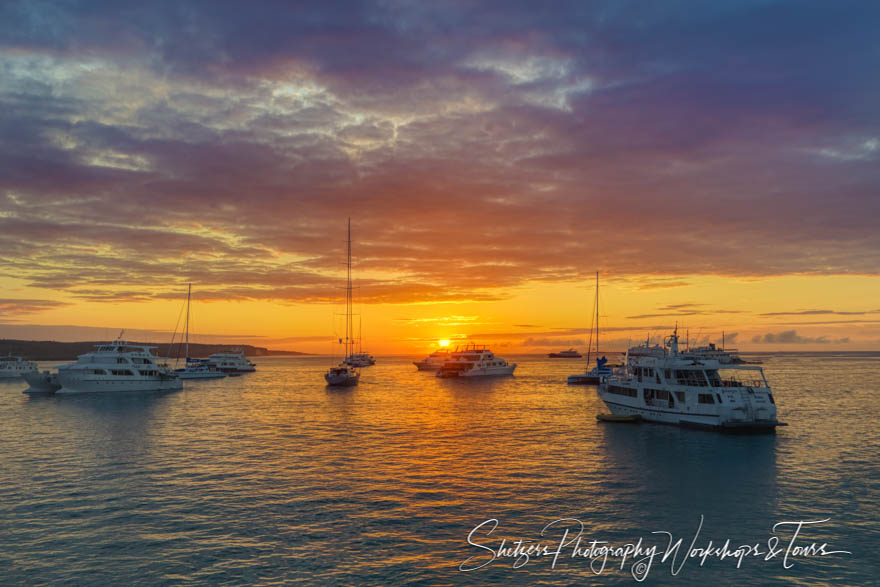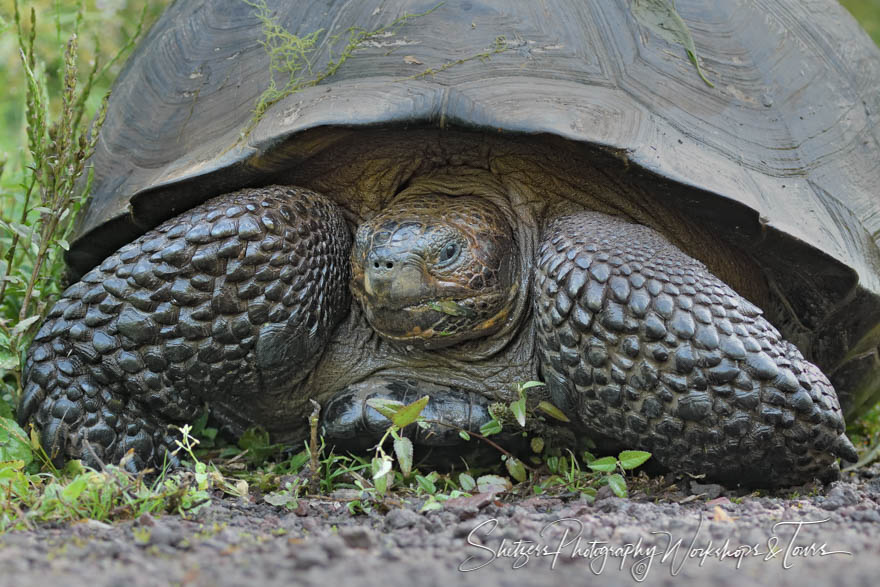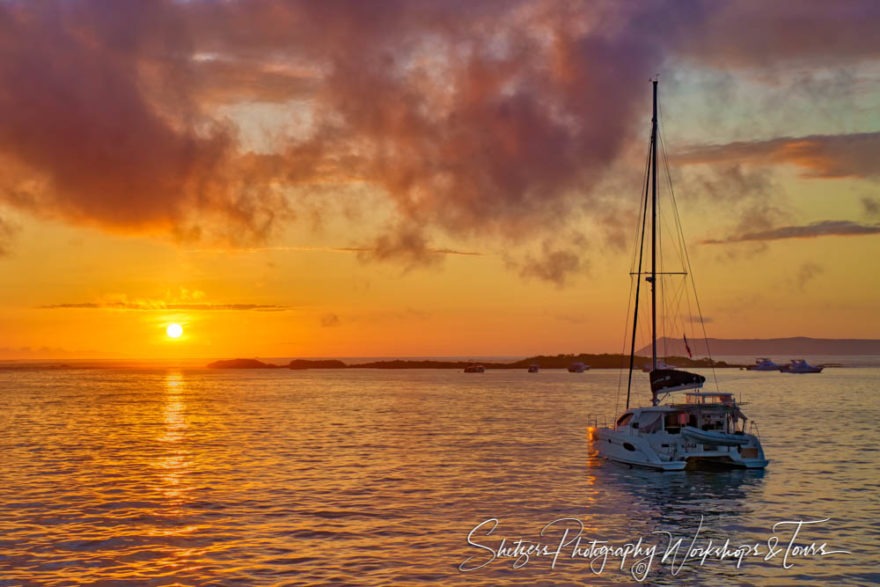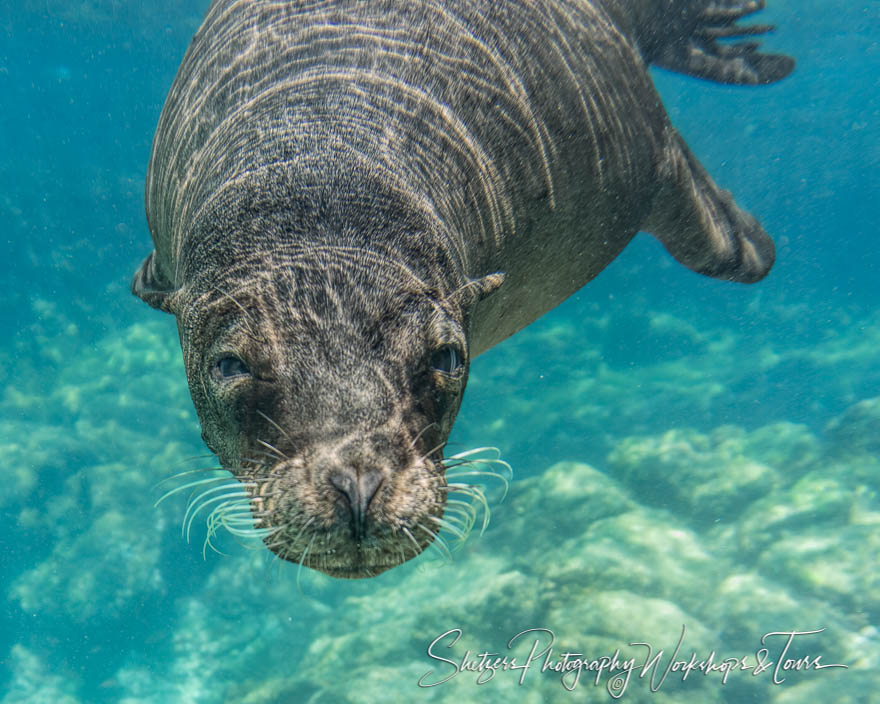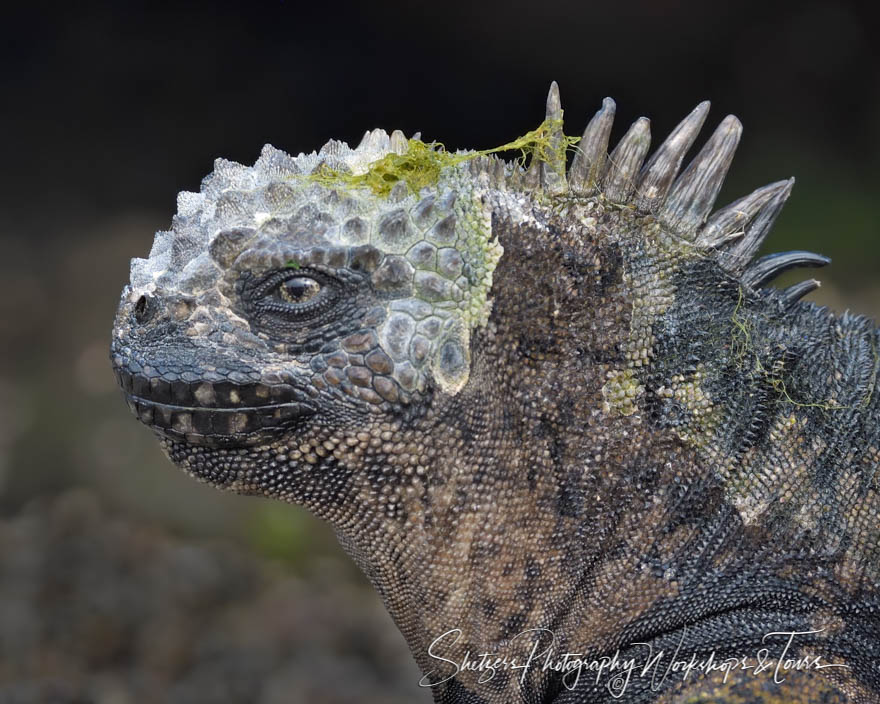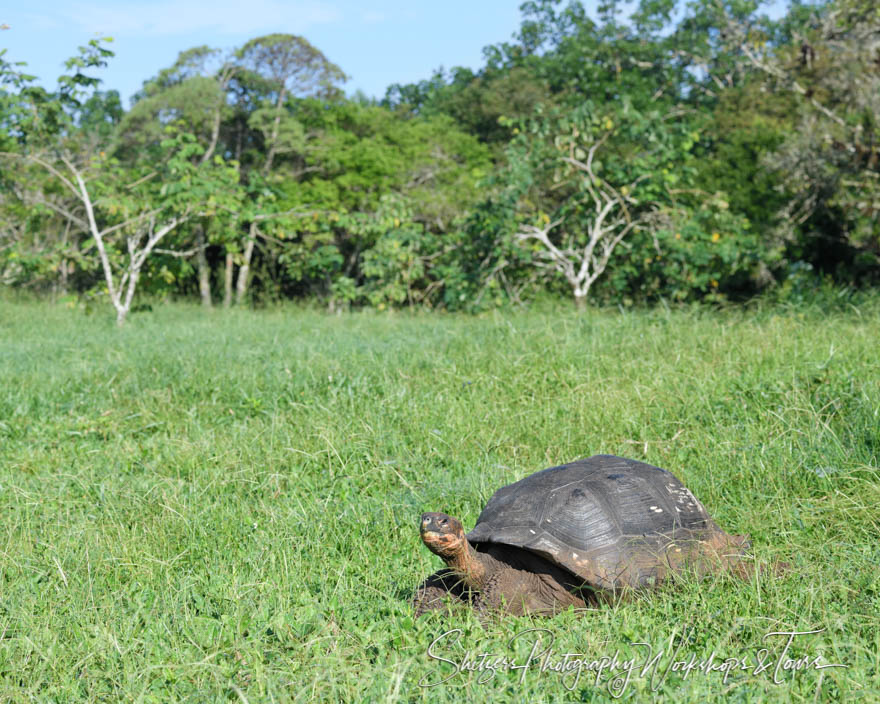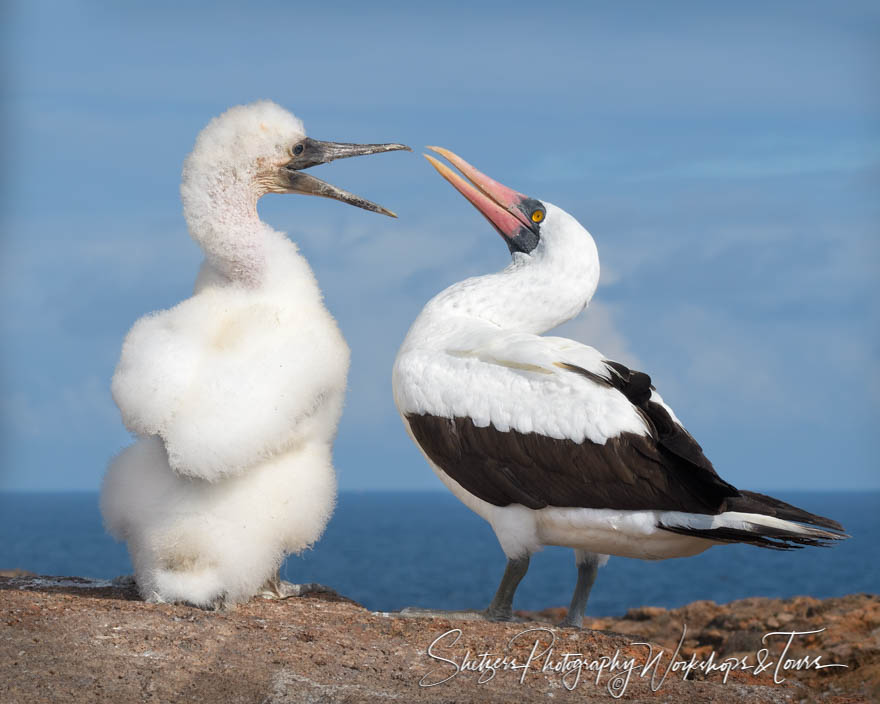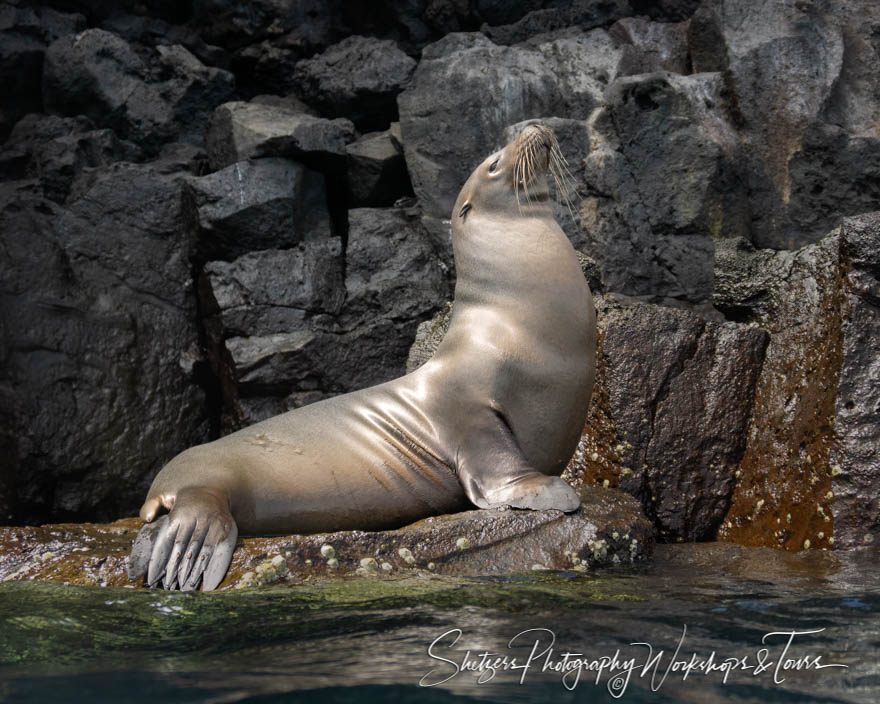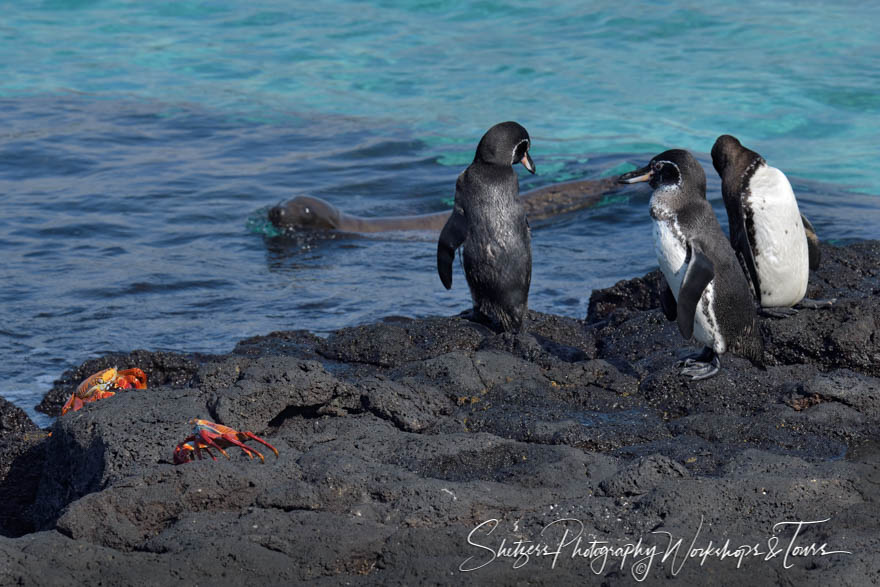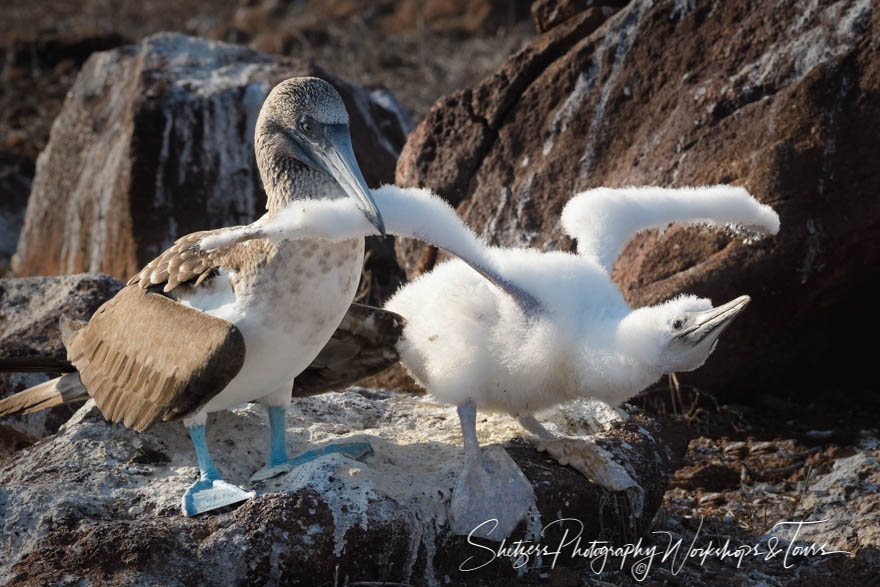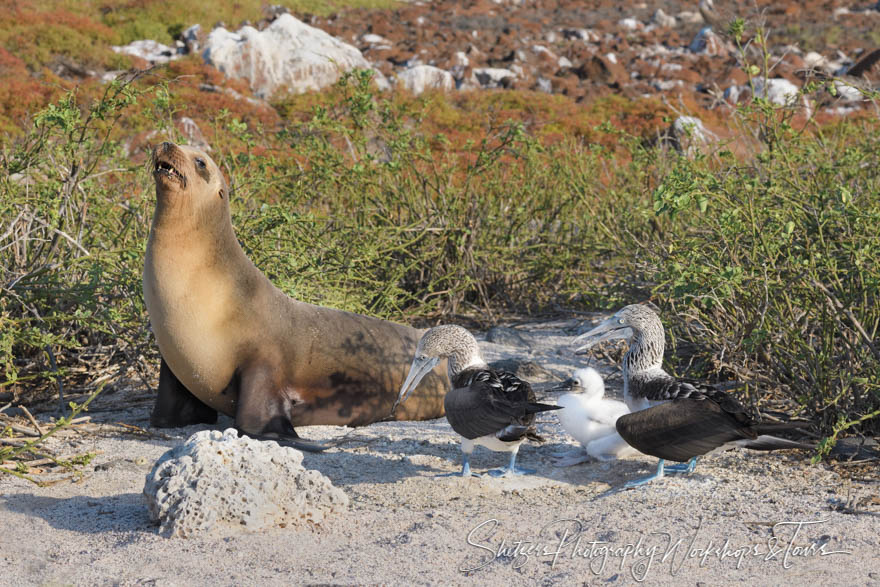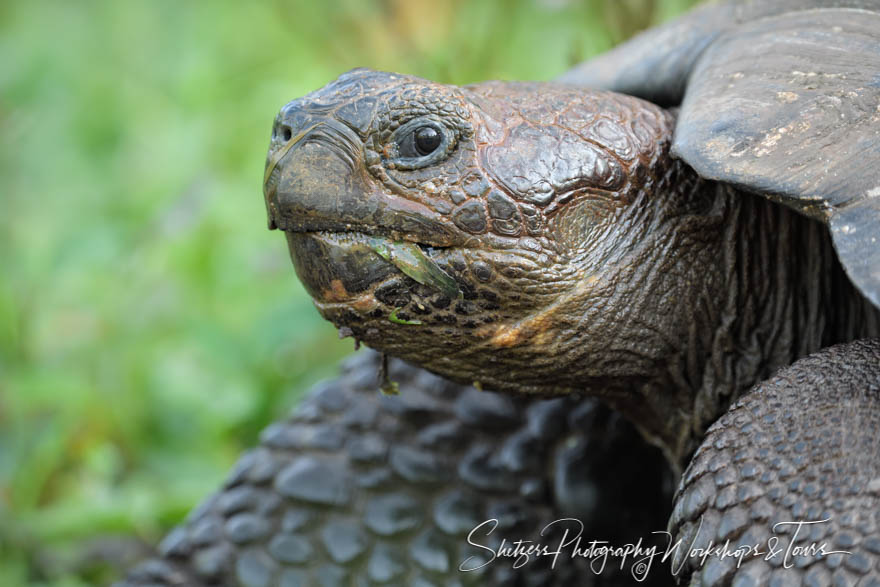ITINERARY
Day 1 – Arrive Quito, Ecuador
As we begin the Galápagos Photo Tour of the eastern side of the islands, our representative will greet you upon your arrival in the airport in Quito, Ecuador. Your driver will escort you to your hotel for the night, a historic colonial-style seventeenth-century building, just outside Quito, the second-largest city in this beautiful country.
The hotel has beautiful gardens whose trees are centuries old. If you have any free time, take advantage of the gardens and look for the 33 species of birds that regularly visit.
Tonight, we will have a group dinner to get to know everyone, and talk about the exciting days to come in the Galápagos Islands.
For those arriving early, Quito has one of the best-preserved historic centers in the Americas, and is great to explore on foot.
Some places to explore prior to the workshop include:
- Plaza San Francisco and the Church and Convent of St. Francis
- Casa Gangotena (a recently restored historic mansion and boutique hotel)
- Carondelet Palace (the seat of government of the Republic of Ecuador)
- Basilica del Voto Nacional (the largest neo-Gothic basilica in the Americas)
- The Metropolitan Cathedral (one of the oldest and largest Roman Catholic cathedrals)
- Gold leaf interior of the Church of the Society of Jesus
- Church of San Francisco, Church of El Sagrario and Church of Santo Domingo
After dinner, we spend the night in the historic hotel. Get plenty of rest — tomorrow, we begin taking photographs in the beautiful Galápagos Islands.
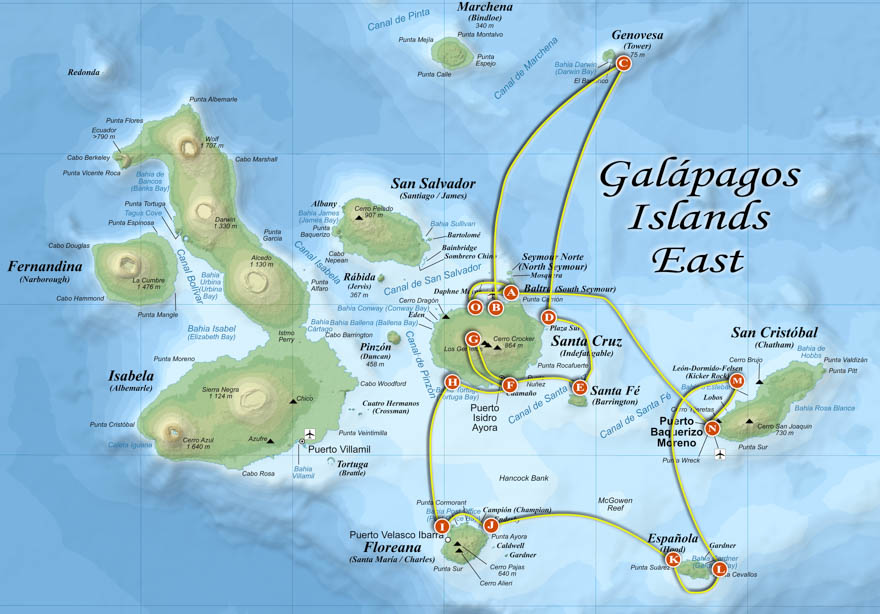
Galápagos Photo Tour – East Route
Day 2 – Galápagos – Balta Island (A) and Santa Cruz Island – Playa Las Bachas (B)
We head out early this morning and fly from Quito to Baltra Island in the Galápagos Islands. As we fly over the Galápagos, you will notice evidence of the volcanic history of these amazing islands. Upon arrival in the Galápagos, we will be met at the airport by our naturalist guide, and transferred to our chartered yacht for the week. We will meet the crew, get comfortable on the yacht, and enjoy a nice lunch as we depart Baltra for Las Bachas on Santa Cruz Island, our first destination.
Bacha beach, our destination on Santa Cruz Island, is home to one of the only remnants of World War II in the Galápagos. During the war, the US government rented strategic locations from Ecuador, and abandoned an old barge there after the fighting was done. “Bacha” means “barge” in the local accent.
Santa Cruz Island is the headquarters of the Galápagos National Park and has beautiful white coral beaches, black lava rock, and brackish water lagoons. We hope to see abundant wildlife here, including the colorful pink greater flamingos. After landing on the island, we will take a short hike to photograph some of the species in the list below — especially greater flamingos, sea turtles, black necked stilts, and brilliant sally lightfoot crabs.
- Greater flamingo (native)
- Blue-footed booby (native)
- Darwin’s Finches or Galápagos Finches (endemic)
- Galápagos mockingbirds (endemic)
- Galápagos shearwater (endemic)
- Great frigatebird (native)
- Lava Gull (endemic)
- Yellow warbler (endemic)
- Sally Lightfoot Crabs
- Marine Iguana (endemic)
- Lava Lizards (endemic)
- Sanderling (migrant)
- Whimbrel (migrant)
- Black-necked stilt (native)
- Brown Noddy (native)
- Brown pelican (native)
- Great blue heron (native)
After our short hike, we will have the option to swim right off the beach. Bacha is a great place to relax and get comfortable swimming in the ocean and enjoy the colorful fish.
As the sun gets low in the sky, we will return to the yacht for the evening, enjoy a nice dinner and lecture from our local Galápagos naturalist.
Day 3 – Genovesa Island – Prince Phillip’s Steps and Darwin Bay (C)
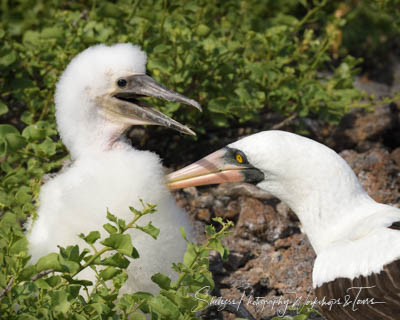
A Nazca booby preens her chick on Genovesa Island
This morning we enter the area of Genovesa Island called Prince Philip’s Steps. These rock formations are named after Prince Philip of England, husband of the late Queen Elizabeth II, who once visited the Galápagos Islands.
We take the zodiacs over to Prince Philip’s steps and we will climb up the steps cut out of the volcanic rock to scale the plateau’s steep basalt cliff. Once at the top, we are treated to the sight of nazca boobies, red footed-boobies, and great frigates everywhere. Boobies and their young show no fear, and sometimes come right up to us in curiosity.
As we take a slow hike, photographing on the way, we will look for different compositions of these unique birds. With the limited brush, we are able to get very low shots. As we approach a channel in the rock, we hope to see the endemic Galápagos short-eared owl.
As we wrap up our shoot, we will get back in the zodiacs and look for Galápagos fur seals, yellow-crowned night herons, nazca boobies, red footed-boobies, and blue-footed boobies on the cliffs and rocky shore. We will keep our eye out for seals basking in the light.
- Nazca booby (native)
- Blue-footed booby (native)
- Red-footed booby (native)
- Galápagos short-eared owl (endemic)
- Great frigatebird (native)
- Brown pelican (native)
- Cattle egret (native)
- Elliot’s Storm Petrel (native)
- Galápagos Dove (endemic)
- Galápagos heron or Lava heron (endemic)
- Galápagos mockingbirds (endemic)
- Galápagos petrel (endemic)
- Red-billed Tropicbird (native)
- Yellow-Crowned Night Heron (native)
- Sally Lightfoot Crabs
- Lava Cactus
While walking around Genovesa Island, we hope to witness some of these wildlife behaviors:
- Nazca Boobies feeding their young
- Nazca boobies nesting and mating displays
- Red-footed boobies displaying
- Red-footed boobies nesting and mating displays
- Greater Frigates feeding their babies
- Greater Frigates displaying and inflating their red neck pouches to win a mate
- Greater Frigates building nests
- Galápagos Fur Seals swimming and relaxing
- Galápagos Sea Lion pups playing and cuddling waiting for the return of their mother
- Galápagos Sea Lion male protecting his harem
- Galápagos Gulls with the newly born chicks
Today our optional snorkel is on an interior wall of the caldera, where wildlife is abundant. We hope to see Galápagos fur seals, Galápagos sea lions, colorful fish, rays, and reef sharks.
After lunch, we take a zodiac to Darwin Bay on the island of Genovesa, and make a wet landing to see many new species as we stroll around the trail. The island is ideal for photography, as the birds get very close and fly at low levels.
As we walk around the bay, look for nests, babies, and activity. At the beach, the sea lions are sunning themselves on the white coral beach as the green water breaks.
It does not get much better than this!
- Red-footed booby (native)
- Nazca booby (native)
- Blue-footed booby (native)
- Great frigatebird (native)
- Galápagos Dove (endemic)
- Galápagos heron or Lava heron (endemic)
- Galápagos mockingbirds (endemic)
- Galápagos Fur Seals (endemic)
- Galápagos Sea Lion (endemic sub-species)
- Brown pelican (native)
- Cattle egret (native)
- Elliot’s Storm Petrel (native)
- Galápagos petrel (endemic)
- Great blue heron (native)
- Yellow-Crowned Night Heron (native)
- Sally Lightfoot Crabs
- Marine Iguana (endemic)
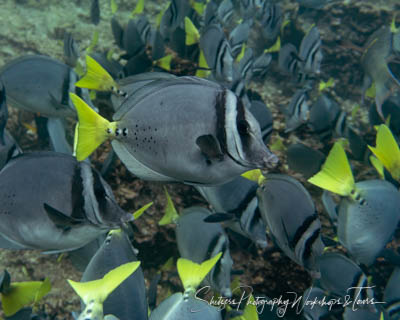
Explore all the colorful fish during one of our snorkeling excursions
After another very full day, we head back to the yacht for a little relaxation, dinner, and more information about the Galápagos Islands.
Day 4 – South Plaza Island (D) and Santa Fé Island (E)
This morning, we explore the island of South Plaza. After a dry landing on the jetty, we will hike an easy loop trail, exploring the uplifted island and noting the high cliffs on the southern side. The rocky coast hosts a big colony of Galápagos sea lions, while the eastern point has another colony of sea lion bachelors. As we continue our hike, keep your eyes out for the large population of land iguanas that are typically found near the beautiful prickly pear cactus trees.
We will then return to the yacht for lunch, and continue exploring in the afternoon with an optional snorkel.
In the afternoon, we explore Santa Fé Island, which is home to a large Galápagos sea lion colony. We take the zodiacs to a wet landing on the beach and hike a short trail through the dry vegetation of the Arid Zone. Soon, we will arrive at a forested cliff festooned with prickly pear cactus, then continue on to a second beach. Keep your eye out for the endemic land iguanas of Santa Fé, who like to camouflage themselves in the vegetation.
At the end of the afternoon, we will return to the yacht in the evening for dinner and our nightly discussions.
Day 5 – Santa Cruz Island – Puerto Isidro Ayora (F) – Highlands Cerro Mesa (G) – Puerto Ayora (H)
This morning, we head into the Highlands of Santa Cruz Island in search of Galápagos tortoises and visit the Twin Craters. As we climb in elevation, you will notice the vegetation increases in size, providing an ideal habitat for the tortoises. At the high point on the road, we will re-enter the National Park system. We will spend the morning walking the trails and taking photos of the amazing tortoises who roam the grassy meadows and highland ponds. We will enjoy a lunch at the farm.
In the afternoon we head to Puerto Ayora and visit the Charles Darwin Research Center and learn about the work being done there with tortoises. We will learn a little history about Charles Darwin and the Beagles explorations and the story of Lonesome George, a Pinta Island Tortoise that has recentely gone extinct.
After this busy day, you’ll have a little free time to explore Puerto Ayora, a lively town.
As the day comes to an end, we will head back to the yacht for dinner and our nightly discussions.
Day 6 – Floreana Island – Asilo de la Paz / Baroness Point View / Post Office Bay (I) – Cormorant Point / Champion Islet (J)
We have a very full schedule this morning on the north side of Floreana Island, visiting three different locations.
Baroness Point View
In the morning we will make a landing at the Baroness Point. This area was named for Baroness Eloisa von Wagner, an interesting character, who lived on the island starting in 1932.
Post Office Bay
We will then continue on the Northside of Floreana and learn about Post Office Bay and the traditions which started in the 18th century starting with the early whalers.
After exploring the North side of Floreana Island, we will take time for a nice snorkle and hope to see a few penguins, rays and turtles that live on this island.
We will head back to the Yacht for lunch and then continue on to Cormorant Point.
Cormorant Point
We start with a wet landing on the “Green Beach” of Punta Cormorant. This unique beach shines green in the sunlight due to the high concentration of olivine crystals in the sand.
As we walk on the beach, we will photograph a very large salt-water lagoon, where flamingos, black-necked stilts, Galápagos petrel, and white-cheeked pintail ducks hang out. The lagoon is one of the flamingos’ favorite locations, and hosts the largest flamingo flock in the Galápagos Islands. The diversity of wildlife at Cormorant Point is truly impressive.
We hope to see blue-footed boobies with their young chicks, as well as males and females doing courtship dances — he prances around, showing off his colorful blue feet, while she coos distinctively. The female Blue-footed boobies prefer the males with the bluest feet. After the dance, if she accepts him, the male lays a single twig at the female’s feet to symbolize the nest they are about to build.
It is quite a beautiful display to watch and photograph.
Make sure you have a landscape lens today: the sandy beaches and lava rock are beautiful.
- Blue-footed booby (native)
- Greater flamingo (native)
- Galápagos Sea Lion (endemic sub-species)
- Elliot’s Storm Petrel (native)
- Galápagos heron or Lava heron (endemic)
- Galápagos Penguin (endemic)
- Yellow warbler (endemic)
- Marine Iguana (endemic)
- Galápagos Green Turtle (endemic sub-species)
- Galápagos petrel (endemic)
- Semi-palmated plover (migrant)
- Brown pelican (native)
- Cattle egret (native)
- Great blue heron (native)
- Magnificent frigatebird (native)
- White-cheeked pintail Duck (native)
- Sally Lightfoot Crabs
- Lava Lizards (endemic)
We then continue to Champion Islet, a small island off the coast of Floreana Island. The principal attraction of Champion Islet is the nearly-extinct Charles (Floreana) Mockingbird. Other species of birds on the island include the Swallow-tailed Gulls, Nazca Boobies and Brown Noddies.
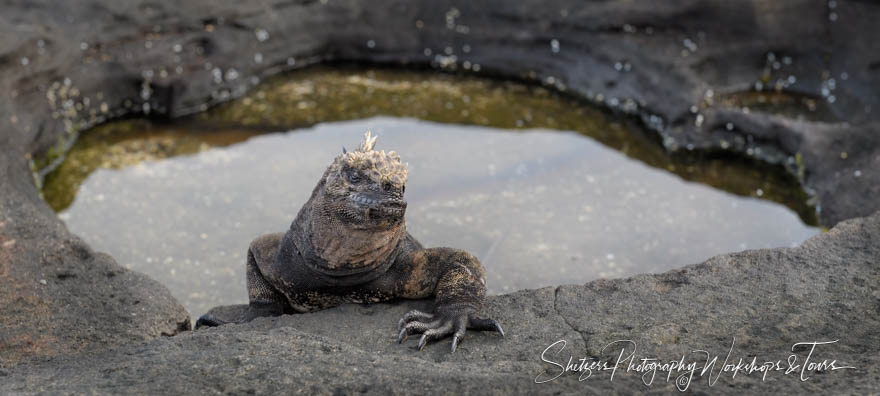
A Marine Iguana hangs out in one of the tidal pools in the coastal lava rock
Day 7 – Española Island – Suarez Point (K) and Gardner Islet / Osborn Islet / Gardner Bay (L)
Today we explore Española Island, one of the oldest islands in the Galápagos chain. Due to its geographic isolation, it has a significant number of endemic species, making it a highlight of the trip. The impressive Waved or Galápagos albatross comes to Española Island for its breeding season from April to December, just in time for our trip.
We explore Punta Suarez in the morning by making a dry landing and hiking the rocky loop trail. Keep an eye out for Galápagos Sea Lions and the colorful red Española marine iguana as we hike the rocky terrain.
At Punta Suarez, the endemic Española Mockingbird is very curious about visitors to the island, and is a great sight to see. We continue our walk through nesting colonies of Blue-footed boobies, Nazca boobies, and the Waved albatross. Large Española lava lizards are everywhere.
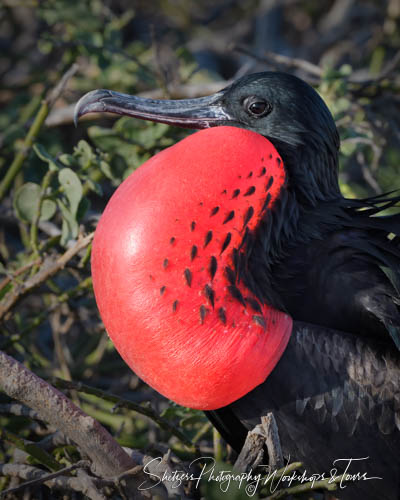
Great frigatebird inflating its pouch to lure a female to breed with
As we come to cliffs edge you can view all the different marine birds circling along the coast. If we are fortunate, we will get to watch an albatross taking off from the cliff.
As we continue our hike, we will stop by a blowhole on the coast where the seawater is being pushed up through a fissure in the cliff. Depending on the waves and tide, this water can reach 80 feet in the air.
Some of the highlights on Española Island
- Waved albatross
- Española marine iguana
- Galápagos Sea Lions
- Blue-footed boobies
- Nazca boobies
- Española mockingbird
- Española lava lizards
- Darwin Finches
After lunch we will have an option to go for a snorkle on a rock wall that has has a large population of Galápagos Sea Lions, rays and colorful fish.
In the afternoon we will explore Playa Gardner, making a wet landing on a long beach made of white coral sand. Leave your shoes on the yacht, and feel the beautiful sand between your toes.
We will photograph Darwin’s finches and Hooded or Española mockingbirds in the saltbush vegetation, and hope to capture close-up images of Galápagos sea lions.
Later in the day, we have the opportunity to take a nice swim and snorkel right off the beach of Playa Gardner.
Day 8 – San Cristóbal Island – Cerro Brujo / Kicker Rock (M) – Moreno Port (N)
After breakfast we will tour the unique tuff peak of Warlock hill, then make a wet landing on Cerro Brujo walking on the white sand beaches and photograph the sea lions, brown pelicans, marine iguanas, brown noddies, Sally lightfoot crabs, American Oystercatchers, Great Frigates and Great blue herons, and of course the blue-footed boobies.
The area is extremely scenic with the brillant aqua colored water, black lava rock, white beaches and Kicker Rock in the background
Before lunch we will sail around Leon Dormido, also known as Kicker Rock, a massive tuff-rock that juts abruptly almost 500 feet straight from the ocean. As we approach the massive tuff-rock you see why it is nicknamed the sleeping lion. Many sea birds use Kicker Rock as a safe nesting place such as the Nazca boobies, Great rigatebirds and Brown Noddies.
In the afternoon we have option of hiking on Isla Lobos and seeing many nesting Blue-footed boobies with eggs and chicks, nesting Great frigatebirds, Brown pelicans, Galapagos Green Turtles and Galapagos Sea Lions.
In the afternoon we have an optional snorkle in the afternoon to swim/snorkle with the abuntant sea lions at this location.
The early evening we go to the lively town of Puerto Baquerizo Moreno on the South tip of San Cristóbal Island. Spend some time walking around this town in search of some souvenirs, a nice ice cream or coffee.
Return to the Yacht at sunset for dinner.
Day 9 – Santa Cruz Island – Black Turtle Cove (O) – Baltra Island (A)
On the last day of the Galápagos Photo Tour, we head out early before breakfast to explore the protected mangroves of Black Turtle Cove. As we navigate with the zodiacs, we will turn off the motor to observe Galápagos marine turtles in their natural habitat.
Many turtles come to the mangrove cove to rest. Spotted eagle rays, golden rays, white-tipped reef sharks, black-tipped reef sharks and young Galápagos sharks can also be spotted at Black Turtle Cove.
After breakfast, we arrive at the harbor of Baltra where our adventure started, in time for our morning flight back to Quito. After a full week of photography we say goodbye to the fantastic crew as we are taken back to the Baltra airport to begin our journey home or to your next adventure.
ITINERARY CHANGES
The operator(s) and/or the captains of the yacht reserve the right to make changes to or cancel any part of the itinerary or programs without giving prior notice. Changes may be necessary due to unforeseen circumstances, such as new Galápagos National Park rules, public authority decisions, weather or natural disasters, force majeure, and/or any other extreme circumstances. These decisions will be made to avoid problems and protect the safety of the passengers. If we must make a change, we will offer the best possible alternatives or adjustments.
PRICE INCLUDES
- 9 Days / 8 Nights’ Galápagos Photography Workshop
- 8 Days / 7 Nights’ accommodation aboard Galápagos yacht – Double occupancy (Limited Single Occupancy available)
- 1 Night accommodation in Quito, Ecuador – Double occupancy (Single Occupancy available)
- Round-trip airfare from Quito to the Galápagos Islands
- Ground transportation to and from the Quito airport
- Ground transfers in the Galápagos Islands
- All shore excursions with an English-speaking Galápagos naturalist guide
- Snorkeling equipment: mask, tube, and fins from size 34 – 45 (Optional)
- Ecuador Transit Control Card
- All meals are provided during the workshop. Expect to gain a couple of pounds on the trip
- Instruction in the field with your photographer guides (2 guides if 10 guests or more)
- Photography instruction on photo editing techniques
- A planning package that includes recommendations on the proper camera gear and clothing
- We take care of all the trip logistics once you arrive Quito. The only thing you should concentrate on is having a fantastic time and capturing stunning images of the Galápagos Islands.
Anytime before you embark on your journey, our trip leader Matt is happy to provide a free phone consultation. He can give you guidance on what equipment to bring, answer questions about the locale, and give general photography advice to make sure you are ready to capture your dream images.
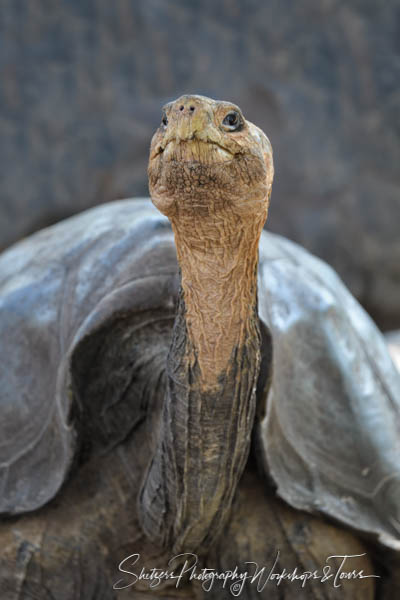
Galápagos tortoise stretch their necks out to show dominance. The one with the longest neck wins.
NOT INCLUDED
- Air Transportation to Quito, Ecuador from your home base and back
- Alcoholic drinks/Bottled beverages
- Personal items
- Wet suits (Shorty wet suits in all sizes will be available to rent on board)
- Gratuities for yacht crew and local naturalist
- Galápagos National Park entrance fee
- Travel/Cancellation/Emergency evacuation insurance
PHYSICAL REQUIREMENTS
You should be in good physical health. You will be walking on trails with your camera gear for about 2 hours, typically 1-2 miles per destinatino. While most of the trails are smooth, some are on uneven terrain such as lava rock. You will need to be able to get in and out the zodiac boats, both on the yacht and in knee-deep water when we make wet landings. There are stairs/ladders on the boat which you will need to be able to go up and down comfortably.
If you are concerned about the physical demands of this trip, please contact us, and we will be glad to discuss options to accommodate your needs.
PHOTOGRAPHY SKILL LEVEL
Our Galápagos Photo Tour is open to all photographers, from beginners to professionals.
WEATHER CONDITIONS
This is the perfect time to explore the Galápagos. The weather is ideal, neither too hot nor too cold. Low temperatures are typically around 72° Fahrenheit (22° Celsius), with highs of a pleasant 82° Fahrenheit (28° Celsius).
Expect very little rainfall — the islands average less than an inch for the month.
TRIP LEADERS
Matt Shetzer – Matt has been leading photographic workshops all over the world since 2011, and loves being outside and enjoying nature. To read more about Matt, click HERE.
INSTRUCTIONAL TOPICS
While our primary goal is maximum field time, we will take advantage of non-optimal photography conditions to provide photo workshops, discussing the following subjects in detail:
- Achieving the best composition
- Proper exposure for the scene
- Focus techniques for that crisp image
- Getting the most out of the histogram
- Mastering the modes (when to shoot manual, aperture and shutter priorities)
- Taking images for HDR (High Dynamic Range)
- Image workup techniques with Photoshop and Lightroom. At each workshop, we demonstrate how to work up attendees’ images from scratch, displaying our nondestructive techniques to produce the highest quality image.
- Best Plugins to use
- Color Correction
- Layers and Masks (Masks are targeted adjustments)
- Noise reduction and sharpening techniques
- Lightroom and portfolio management
- Photography discussions – Review select images and discuss which images work and why to expand your skills and move to the next level
Over the course of the Galápagos Photo Tour, you will learn photographic techniques to hone your digital photography skills, learn how to achieve the perfect exposure, and take control of your camera to achieve the sharpest image quality.
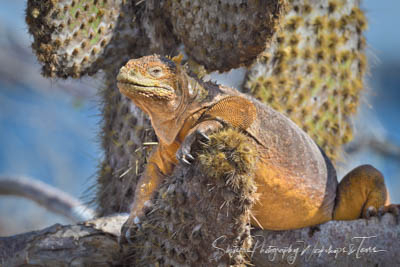
Galapagos land iguana hanging out on a prickly cactus.
CAMERA EQUIPMENT TO BRING
- A telephoto lens from 80 to 400mm
- A landscape lens from 24-70mm
- Camera Backpack
- Lots of memory cards. We typically shoot about 1,000 images a day. Bring more than you think you need.
Prior to the trip, you will receive a detailed planning package with recommendations for camera gear.
NON-PHOTOGRAPHER GUESTS
The Galápagos Islands provide a spectacular experience for everyone. Whether you enjoy photography or just have a love for nature, there is something for you in the Galápagos Islands.
Non-photographers are welcome on the tour, and are free to join us on all activities at a discount of $250.00.
CLIENT COMMENTS
Read what our fantastic guests are saying about our workshops. Client Comments
CANCELLATIONS/TRIP INSURANCE
The Yacht requires all guests to have trip insurance that covers Covid from a third-party operator to protect your travel investment against medical emergencies, participant trip cancellations, trip interruption and delay, weather delays, missed connections, baggage loss or delay, emergency evacuation and repatriation or simply ‘Cancel for any reason coverage’.
Because Shetzers Photography must pay fees for reservations and leases of accommodations and transportation needs of the group far in advance of the workshop, all paid tour fees are non-refundable, non-transferable and cannot be applied to a future workshop. Shetzers Photography runs small group workshops and wants to ensure the workshops are not canceled due to participant cancellations thus impacting the participants who do not cancel. All tour cancellations must be submitted in writing and will result in loss of deposit and all fees paid.
Please review our Workshop Terms and Conditions.
COVID-19 and Variants Policy
If regulatory restrictions in the hosting location prevent the workshop from running as scheduled, the workshop will be rescheduled to a future date. All participants must meet hosting country vaccination requirements. No refunds or rescheduling will be allowed due to guest cancellations when the workshop is able to run following all host location regulatory restrictions.
WAITING LIST – IF A TRIP IS SOLD OUT
Over the last few years, all of our trips have sold out. We start to fill up about a year before the workshop, and keep the website updated with the current availability of space. If a workshop is full, you can add your name to the waitlist. If a spot becomes available, we will contact the guests on the waitlist immediately, in the order they signed up. We tend to have the most cancellations 90-180 days before a trip start, so being on the waitlist means you still have a good chance of getting on the trip. We require no deposit to get on the waitlist.
PAYMENT/RESERVATIONS
The cost for the tour is $7,995.00 USD based on double occupancy. We offer single accommodations for an additional $2,995.00 USD per person, which guarantees a single attendee a private cabin for the trip which is limited to availability of staterooms.
To reserve a spot on this tour, we require a $1,000.00 USD deposit per person, paid by credit card at the time of registration. $4,000 of the full amount of the workshop fee will be due approximately 13 months prior (March 1st) to the start of the workshop. The remaining payment for the workshop will be due approximately 4 months prior (February 1st) to the start of the workshop. Fees can be paid by check or bank transfer. All fees are non-refundable.
Once we have received the final trip payment, we will send the detailed trip planning documents to each guest, to help them plan for their best possible photography workshop.
If you are not traveling with someone, we will assign you a roommate depending on group makeup and gender.
Our workshops are filled on a first come, first serve basis. Workshop availability will be updated on this page.
If you have any additional questions or would like to speak to one of us, please contact us at 303-888-2710 and we would be happy to answer your questions.

